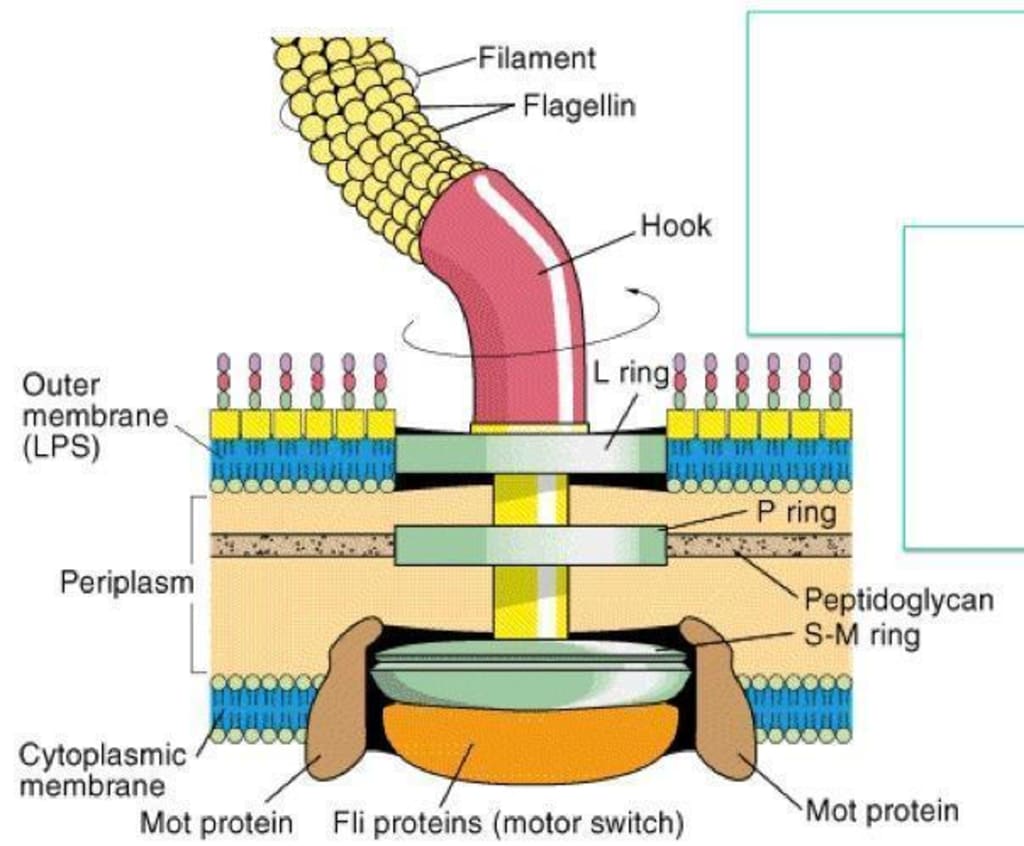
Most people are unfamiliar with the world of bacteria because they can not be seen directly by the human eye, but, in the world of living things, the bacteria domain occupies a fairly large category, and the reality is almost everywhere. Many bacteria have a very magical ability, for example, recently scientists have discovered that the flagellum of bacteria has a motor similar to an aircraft engine, its speed is very fast, up to thousands of revolutions per second, amazing or not?
According to "Science and Technology Daily" reported on April 21, China's Zhejiang University Institute of Life Sciences Professor Zhou Young's team in cooperation with Professor Zhang Xingu's team at the School of Medicine, for the first time systematically revealed the assembly and torque transmission mechanism of the flagella motor of Salmonella, decoding the mechanism of movement of this bacterium.
Seventy percent of bacteria have flagella as an organ, and these bacteria also rely mainly on the oscillation of flagella to move. Previously, scientists did not seriously study the structure of flagella as an organ, thinking that it moves purely by oscillation, but the team of Prof. Young Zhou and Xingu Zhang found through high magnification electron microscopy that the flagella are composed of a motor on the bacterial membrane, an extracellular junction device, and flagella filaments. One of the flagella motors is particularly amazing, it looks like a turbofan engine on a fighter-type aircraft, but instead of spewing things outward, it can rotate very fast, 300-2400 revolutions per second, which is faster than the speed of most machines that can rotate, such as the punching machines we usually use.
Life can not be separated from cars and other vehicles with wheels, bearings, and runners are almost indispensable machinery for our human society, in the plant and animal kingdom, no one organism has evolved with bearing mechanical principle can that rotates the organ, did not expect that in the bacterial kingdom, most of the bacteria have this structure, this is a very surprising discovery.
Previously, scientists were not clear about the detailed structure of the bacterial flagella motor, the components, the mechanism of operation, etc., and did not know the working principle of the flagella motor (how to achieve efficient torque transmission and thus drive the flagella filament high-speed operation), the above-mentioned scientists in China through a detailed and targeted study, solved these mysteries - in conducting this In this study, the researchers devised a very gentle flagella motor purification procedure, obtained a complete and stable sample of the flagella motor-joint device complex, and then applied Zhejiang University's 300 k microelectronic microscope platform to finally clearly observe the different components of the flagella motor.

Just like the piles needed to drive a car, the flagella motor has a set of components including a linkage rod, outer membrane ring, periphrastic ring, inner membrane ring, secretion Devi, Ce and junction device, etc. This set of components is perfectly configured on the flagella motor of only 26 NM, creating a structure like an aircraft engine, so it is very appropriate to call it a "motor "The "motor" consists of 175 protein sub units with a molecular mass of about 6.3 MAD (very small molecular weight unit), which is a small but complex structure.
And by observing the movement of bacteria and bacterial flagellum can also be found, the bacterial flagellum is also through the flagella motor rotation to generate power, and then through the torque transmission to the joint device, and then drive the flagella filament movement, so that the whole flagellum will be like a propeller to push the bacteria forward, in comparison, its speed is also quite fast, 1 second can run a distance equivalent to dozens of times its length, if we humans have If w a speed, then the 100-meter race will only take a second to run, it can be seen that the flagella motor power of bacteria is very strong.
In this way, a bacteria can also be said to be a machine, but it is small to the level of the manometer level, specifically, it is a supra molecular protein machine, and the flagella motor is the engine of its movement power source. So how does the flagella motor start and move? What force or energy excites the flagella motor's high number of rotations? Through observation and analysis, the research team found that it contains a proton pump, which can drive the rotation of the proton pump by transferring hydrogen ions, which is equivalent to transforming chemical energy into mechanical energy so that the torque can be transmitted to the inner membrane ring of the flagella motor, contributing to the rotation of the inner membrane ring up, Zhang Xingu, one of the leading members of the research team, also said: "(flagella motor) internal structural components The interplay between the various structural elements (of the flagella motor) is very delicate so that the flagella motor can quickly transmit the mechanical energy obtained from the proton pump to the flagella filament to promote its high-speed rotation. Isn't this very clever?
The paper related to this study was published in the top international journal "Cell" recently. The article reveals part of the principles of bacterial motility in the microscopic world, revealing the structure and working principle of the flagella motor from the atomic level, pointing out a new direction for scatological research, as well as for life science and biological evolution theory. New evidence and topics are provided, and new ideas for the design of future antibiotics are offered.
About the Creator
Stajila
The progress of scientific research and its increasingly expanding fields will arouse our hope。






Comments
There are no comments for this story
Be the first to respond and start the conversation.